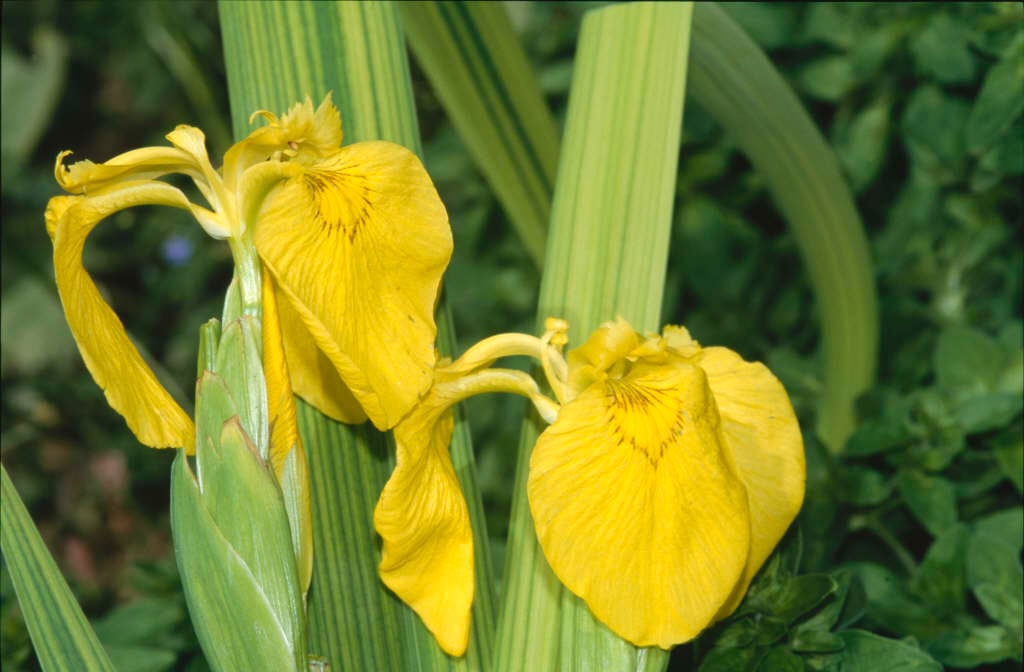Iris pseudacorus 'Variegata' (v)

yellow flag 'Variegata'
A vigorous herbaceous perennial forming extensive colonies to 1.5m in height, with long erect leaves striped yellowish-white. Flowers up to 10cm in width, yellow, the falls with brown veins in the centre

Buy this plant
Size
Ultimate height
1–1.5 metresTime to ultimate height
5–10 yearsUltimate spread
1–1.5 metresGrowing conditions
Moisture
Poorly–drainedpH
Acid, NeutralColour & scent
| Stem | Flower | Foliage | Fruit | |
| Spring | Green White Yellow | |||
|---|---|---|---|---|
| Summer | Brown Yellow | Green White Yellow | ||
| Autumn | Green White Yellow | |||
| Winter |
Position
- Full sun
Aspect
South–facing or West–facing
Exposure
Exposed or Sheltered Hardiness
H7Botanical details
- Family
- Iridaceae
- Native to GB / Ireland
- No
- Foliage
- Deciduous
- Habit
- Clump forming
- Potentially harmful
- Harmful if eaten. Wear gloves and other protective equipment when handling. Pets: Harmful if eaten. For further information and contact numbers regarding pets, see the HTA guide to potentially harmful plants
- Genus
Iris may be rhizomatous or bulbous perennials, with narrow leaves and erect stems bearing flowers with 3 large spreading or pendent fall petals, alternating with 3 erect, often smaller, standard petals, in late winter, spring or early summer
- Name status
Accepted
How to grow
Cultivation
Grow in moist to wet deep, humus-rich, acid soil in full sun. Has the potential to become a nuisance if not managed well so plant with care. See pond plants and bog gardens for further advice
Propagation
Propagate by division from mid-summer to early autumn
Suggested planting locations and garden types
- Cottage and informal garden
- Wildlife gardens
- Coastal
- Flower borders and beds
Pruning
No pruning required
Pests
Diseases
May be susceptible to aphid-borne viruses, bacterial soft rot and grey moulds; see Iris diseases
Get involved
The Royal Horticultural Society is the UK’s leading gardening charity. We aim to enrich everyone’s life through plants, and make the UK a greener and more beautiful place.